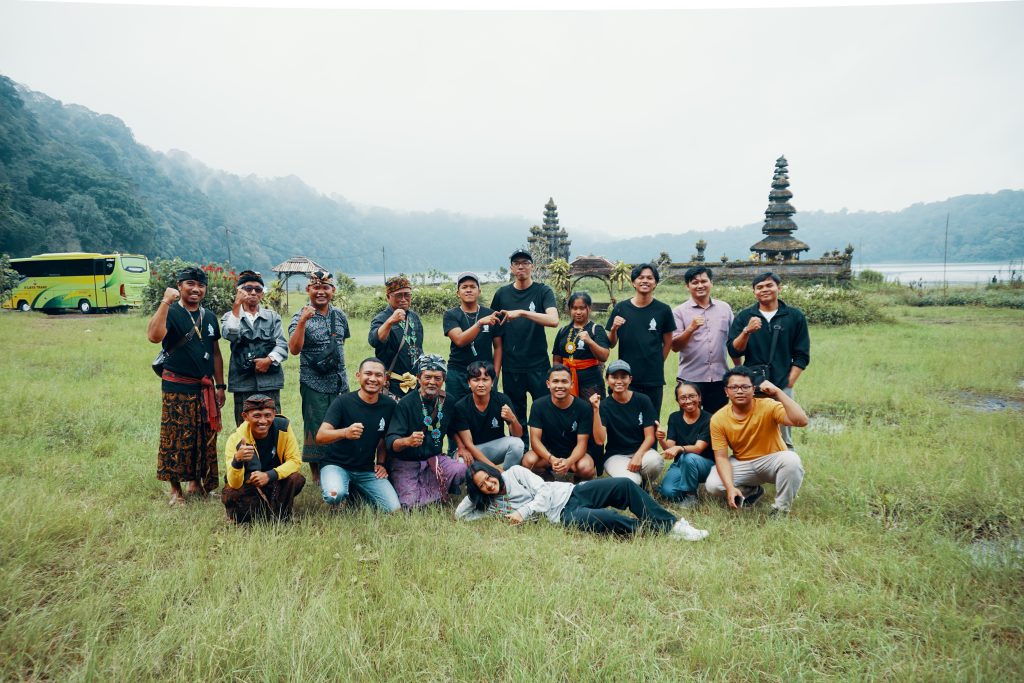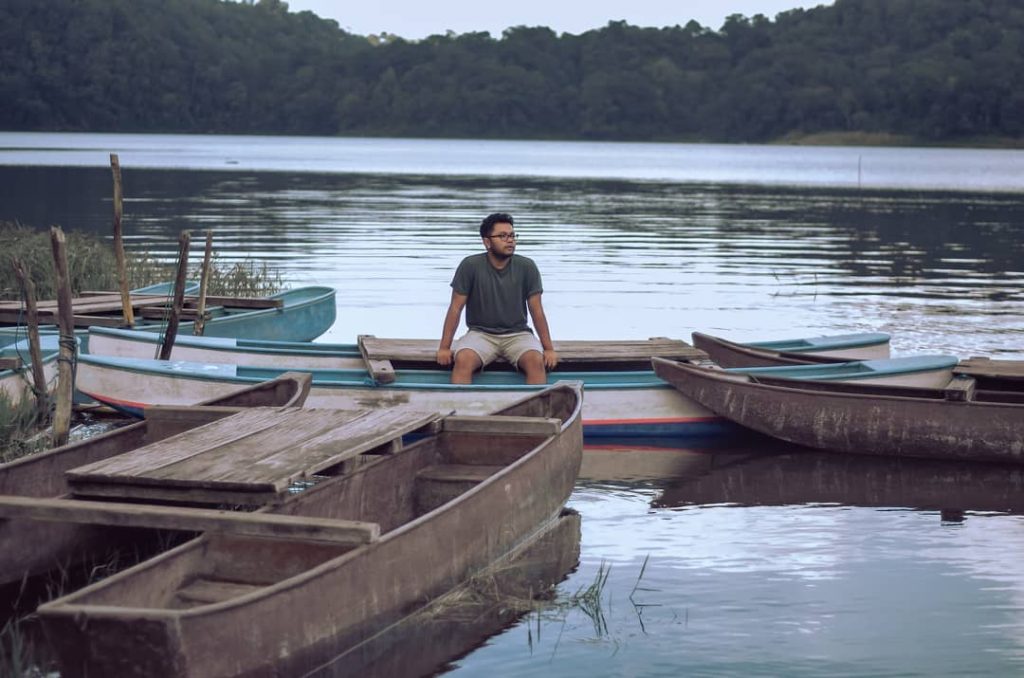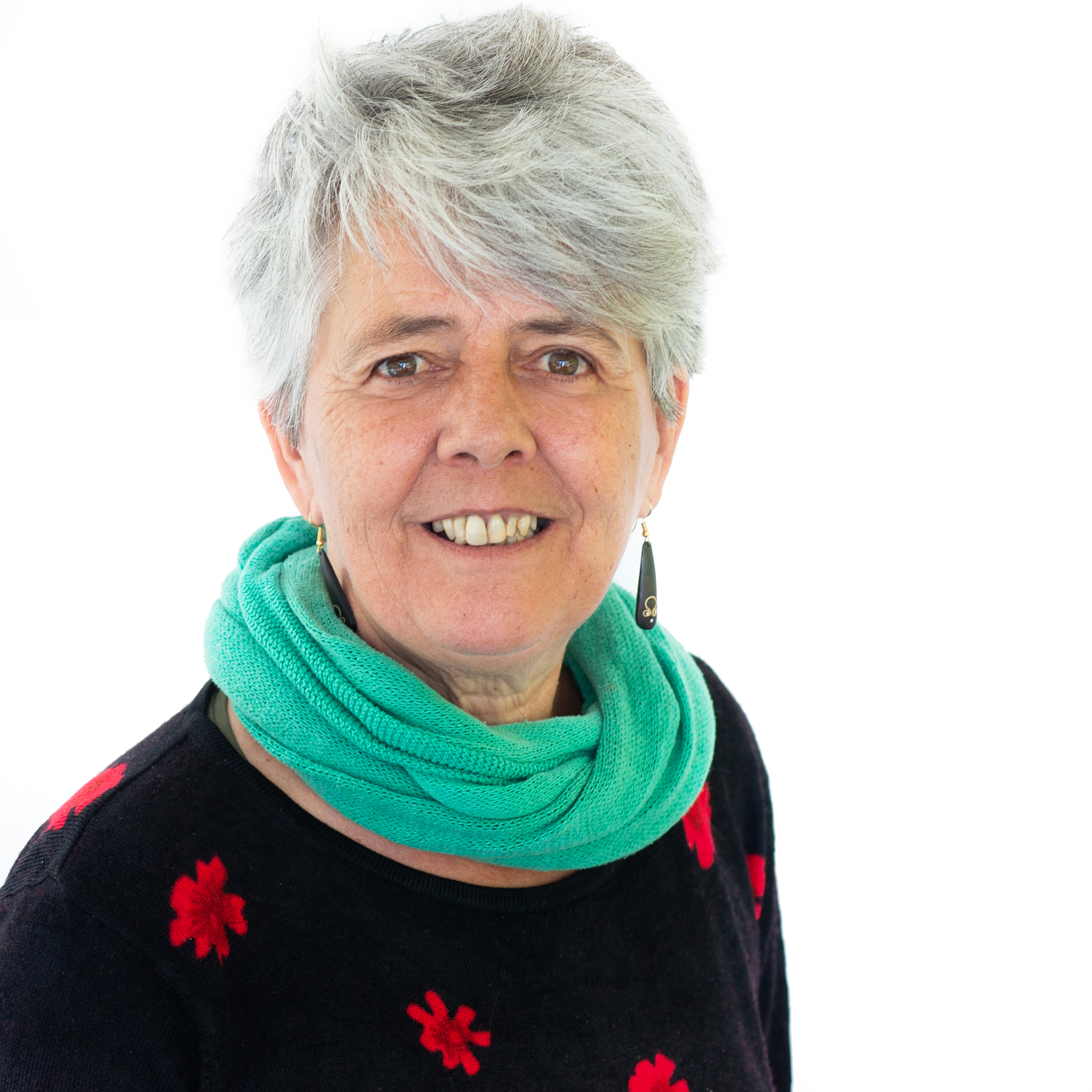Policy brief: tackling policy dilemmas for wetland restoration
08 December, 2025
Monday 07 august 2023
Header photo: Lake Tamblingan, Bali, Indonesisa © Elman Thiana
The Indonesian island of Bali is most well-known as a beautiful holiday destination, with its beaches, lakes and pristine forests. Elman Thiana (27), who lives in Tamblingan in North Bali, understands why so many want to visit: ‘Tamblingan is one of the best spots in the area, it’s beautiful. But that is also why a lot of investors in tourism are interested in it and want to make money from it.’
Thiana is a member of BRASTI, an organisation that is composed of mostly young members of the Adat Dalem Tamblingan Indigenous people. They work to protect the forest and the lake in Dalem Tamblingan. The Adat Dalem Tamblingan Indigenous people have been living there for many centuries and have declared the area sacred. ‘Hundreds of years ago, my ancestors moved away from the lake in order to keep the area intact, as it provides us with water and food,’ says Thiana. Lake Tamblingan is one of four lakes in Bali which is still pristine and the only lake on which cage fish farming and water-based tourism, such as motorboats and paddle boats, are not allowed.


But outside influences on the area could not be avoided forever. Since the turn of the 21st century, the forest and lake have been under threat from illegal logging, land use change for agriculture, poaching and developments for tourism. ‘This caused lots of endemic plants and other species to disappear. The quality of the water also started decreasing, which meant the future of the people depending on it also became uncertain,’ Thiana explains. The flow of the river and several water springs have decreased, and some have even dried up. In response to these impending threats, in 2018 the leaders of Adat Dalem Tamblingan founded BRASTI to conserve the area and its cultural values.
Elman Thiana, young member of the Adat Dalem Tamblingan Indigenous people‘We want to share and keep the values that we and our ancestors have had for a very long time. The goal is still the same: to protect the nature that we depend on.’
Around 60 young people in total are involved in the organisation. ‘We want to share and keep the values that we and our ancestors have had for a very long time. The goal is still the same: to protect the nature that we depend on. But because the world around us is developing, we have to find new ways to achieve our goal,’ says Thiana.
An important way to do this is by creating videos that inform other youth and communities in Tamblingan about the importance of nature for survival. ‘During the pandemic, I started learning how to make videos. Through videos and photos, I would like to share the values and the knowledge that we have here in Tamblingan,’ Thiana explains. His biggest video project to date is ‘The Guardian’s Struggle’, which shows the threats that the area is facing and stresses the importance of the lake and the forest for Tamblingan’s culture and for life.
In addition to raising awareness, the youth have also done participatory mapping to create an inventory of the flora and fauna in Tamblingan, to be able to claim it as Customary Forest. They also document different aspects of their age-old culture that is intrinsically linked to nature. In these activities, they included various community groups, such as women and banten (offerings) makers.
‘The information we collected shows that the degradation of the forest is halting, but not fast enough. There are still reports of illegal logging, so we need to stay aware and focused on protecting our forest and lake,’ Thiana says. In the next few years, the group hopes to expand their area of work to the farmland in the area. The plantations with vegetables and flowers are chemically fertilised, damaging the soil and water quality. ‘We want to support the farmers in changing this system to a more organic one,’ Thiana explains.
Another recurring threat to the conservation of Tamblingan is the growing tourism on Bali. A part of the forest area has been designated as a nature tourism park, attracting tourists to the area. In 2021, a big investor from Jakarta made plans to build a tourist lookout in the trees so visitors could see how the people of Tamblingan live and practice their cultural rituals.
‘They think tourism will be good for their income and for our community, but they don’t see the consequences for the future,’ says Thiana. Therefore, the Indigenous leaders did not accept the tourism development to happen and the plan did not go through. But with the tourism industry on Bali still booming, the threat has not disappeared forever.
Since the country became independent in 1945, the Indonesian government has been responsible for managing Tamblingan. ‘Although the government has promised that they will support us in protecting Tamblingan, we have not yet seen any real action from them,’ says Thiana.
This issue is faced by more communities in the country. Even though the Indonesian government pledged to massively boost the area of forest land managed by communities in 2016, the progress towards the target of 12.7 million hectares has been slower than expected due to long and complicated bureaucratic processes to obtain rights to manage the forest. Without support from civil society organisations, it is nearly impossible for Indigenous peoples and local communities to obtain a so-called social forestry permit.
Elman Thiana, young member of the Adat Dalem Tamblingan Indigenous people‘We cannot do it on our own, we need organisations and people who share our values to help spread our movement.’
Thiana and his peers have turned to other civil society organisations and communities, Indonesian as well as international, for support to conserve Tamblingan. ‘They share our mission to protect nature and culture. We cannot do it on our own, we need organisations and people who share our values to help spread our movement,’ says Thiana. ‘The work that we do as a youth group is our way of thanking nature for everything it has given us. If we don’t protect nature, we don’t have life,’ Thiana concludes.
The youth of the Adat Dalem Tamblingan Indigenous people are just one example of many around the world. Sharing their stories is an important step, but certainly not the last. Indigenous youth must be included in decision-making for climate and biodiversity. We need to recognise their dedicated efforts in climate action and the creation of an intergenerational connection that keeps their culture, traditions, and contributions alive.
IUCN NL contributes to more sustainable and inclusive management of tropical rainforests, in a way that promotes climate mitigation & adaptation, human rights and preserving the livelihoods of local communities. We do this in the Forests for a Just Future programme by the Green Livelihoods Alliance (GLA).
Together with social organisations, indigenous peoples and local communities this alliance works in 11 countries in South America, Africa and Asia in landscapes where forests and the communities who have traditionally lived there are threatened by the expansion of agriculture (e.g. palm oil, soy), infrastructure, mining and oil and gas extraction, where there are opportunities to influence policy and practices.
IUCN NL is not directly supporting BRASTI, but some of the partners in GLA are (NTFP Indonesia and WGII).
